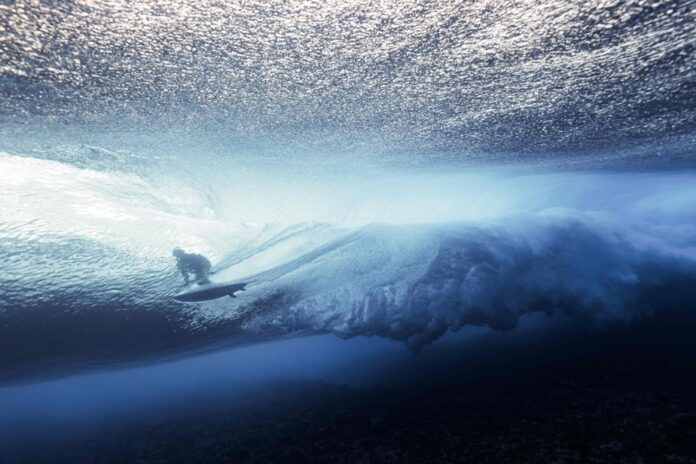(Paris) Suspended work, protests and broken corals: the organization of surfing events on the Teahupo’o wave in Tahiti has experienced multiple twists and turns since the fanfare announcement of what is intended to be one of the highlights of the 2024 Olympic Games.
The organizers of the Paris-2024 Games formalize the choice of the Polynesian island and its legendary wave to host the surfing events, a board sport which made its big debut in Tokyo.
Located in the South Pacific Ocean, 15,000 km from Paris, the Polynesian island was in competition with three sites in the southwest of the metropolis and one in Brittany.
According to the Organizing Committee (Cojo), the criteria of financial cost or environmental impact did not make it possible to clearly distinguish the applications, but “the sporting criterion” made the difference.
The quality of the Teahupo’o wave is recognized by surfers around the world.
“It is an honor and pride for our territory, as the “French surfing nation”, land of origin of the discipline and the only overseas candidate, to have been chosen”, reacted the presidency of French Polynesia. .
A delegation from the organizing committee goes to the small village on the Tahiti peninsula to address the initial concerns of residents, who fear an irreparable transformation of the site.
“This is the first time that the Games will adapt to the site, and not the other way around,” insisted at the time Anne Murac, in charge within Paris-2024 of coordination with French Polynesia, which wishes leaving “the smallest footprint possible.”
After spending six days there, Tony Estanguet, the president of Paris-2024, signed three conventions from Tahiti ratifying the choice of Teahupo’o as the site of the Olympic events.
One of these agreements more specifically concerns the installation of temporary infrastructure near the spot. Certain developments, such as the construction of housing for competitors on site, are refused by some of the residents.
“We are on the path to success,” still promises Édouard Fritch, then president of French Polynesia.
Elected on May 12 as president of Polynesia, independentist Moetai Brotherson comes to Paris and meets the Minister of Sports, Amélie Oudéa-Castéra, and the president of the Games organizing committee Tony Estanguet, to discuss the issue.
“We have a certain number of requirements regarding the holding of these events which we absolutely want to take place here,” says Mr. Brotherson. A few weeks later, Gérald Darmanin and Oudéa-Castéra in turn went to Polynesia to talk with Brotherson about future Olympic installations.
The project to install a new aluminum judges’ tower in the middle of the lagoon, to replace a wooden tower which has not been up to standard for more than ten years, is crystallizing tensions on site.
In mid-October, a peaceful march brought together several hundred people, denouncing the upcoming drilling work to install the tower and expressing alarm at the possible destruction of the corals.
Moetai Brotherson declared at the beginning of November that he was considering moving the event to a fallback spot on the island, but he changed his mind a few days later. Polynesian governance then announced that it had found a compromise with the opponents, proposing to install a lighter tower which would require less work in the lagoon.
Surfing legend Kelly Slater and many other international athletes are now lending their support to the local protest.
During technical tests, filmed by environmental defense associations, a barge planned for the installation of the new judges’ tower broke coral.
Moetai Brotherson cancels its visit to the site and announces the suspension of work. The international surfing federation and the NGO Surfrider are asking to explore “other solutions”, but the organizers of the Games rule out the possibility of a plan B.
After several days of discussions with environmental associations, the Polynesian president announced the continuation of the test at Teahupo’o and the resumption of work. Marking work will be carried out by local specialists to create a channel to avoid damaging the corals, and the barges intended for the work will be smaller.















